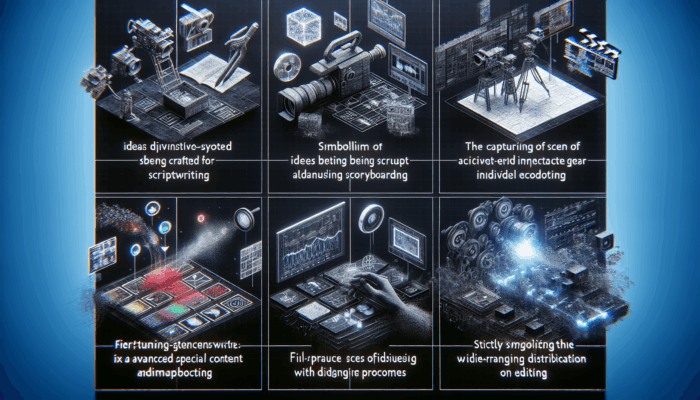Table of Contents
ToggleUnlock the Full Potential of Artificial Intelligence for Enhanced Content Structuring
What Exactly is AI Content Structuring and Why is it Vital for Success?

AI content structuring is the practice of employing artificial intelligence technologies to thoroughly analyse, organise, and enhance the clarity of written materials. By harnessing the power of advanced algorithms and machine learning techniques, AI can propose optimal arrangements for content, ensuring it is both engaging and easy to navigate for readers. This meticulous process not only elevates the overall reader experience but also significantly enhances the quality of the content produced. Some of the leading AI tools frequently utilised for content structuring include:
- Grammarly: Utilises AI to deliver comprehensive grammar checks and insightful recommendations for improving overall structure.
- Surfer SEO: An innovative tool that expertly analyses content for SEO optimisation and structural integrity, ensuring alignment with best practices.
- Hemingway Editor: Focuses on enhancing readability and flow, thereby aiding in the effective structuring of written content.
- MarketMuse: Employs AI to create detailed topic models and recommend content structures based on extensive data analysis and industry trends.
- Frase: Integrates AI to optimise content based on user intent and prevalent search demand, maximising relevance.
- Copy.ai: Offers AI-driven content generation with a concentrated focus on maintaining structural coherence throughout.
- Canva’s Magic Write: Provides valuable suggestions for content organisation and visual structuring to enhance user experience.
The integration of these AI tools has the potential to revolutionise the way content is crafted, ensuring it meets the evolving needs of audiences while adhering to the stringent SEO requirements prevalent in today’s digital landscape.
How Does AI Significantly Enhance the Flow of Content?
AI significantly enhances the flow of content by employing sophisticated algorithms that meticulously analyse text coherence, readability, and logical progression. By scrutinising patterns present in existing content, AI can propose modifications that improve transitions, refine sentence structures, and elevate overall narrative coherence. This enhancement leads to a more engaging experience for readers, who benefit from clearer connections between ideas and themes. AI-driven techniques for bolstering content flow include:
- Contextual Analysis: Identifying the most relevant topics and ideas to ensure seamless transitions throughout the content.
- Sentence Restructuring: Suggesting more effective sentence constructions to enhance overall readability and comprehension.
- Paragraph Reordering: Proposing alternative arrangements of paragraphs to improve logical sequencing and maintain reader interest.
- Transitional Phrases: Recommending specific phrases that help bridge ideas and enhance overall flow, ensuring a smooth reading experience.
These techniques contribute to a more compelling narrative that keeps readers engaged and motivated to continue exploring the content, ultimately leading to higher retention rates and reader satisfaction.
Explore the Numerous Benefits of AI in Content Structuring
The advantages of incorporating AI into content structuring are substantial and far-reaching. By automating various aspects of the writing process, AI not only saves valuable time but also significantly enhances the quality of the written material produced. Key benefits include:
- Improved Organisation: AI provides systematic suggestions that lead to a more logical and coherent structure for your content.
- Increased Engagement: Enhanced readability and flow contribute to better reader retention and overall satisfaction with the content.
- Time Efficiency: Streamlined processes enable content creators to focus on more strategic and creative tasks rather than getting bogged down in minutiae.
- Data-Driven Insights: AI tools offer valuable analytics that inform content decisions and overarching strategies, helping to align with audience needs.
- Consistency: AI assists in maintaining a uniform tone and style across various pieces of content, ensuring brand alignment and recognition.
These advantages position AI as a critical partner in the contemporary content creation landscape, enabling creators to produce higher-quality work in less time while maximising their productivity and creative potential.
Gain Expert Insights into the Utilisation of AI for Content Structure Refinement

What Makes AI an Effective Tool in Content Structuring?
AI’s effectiveness in content structuring is deeply rooted in its ability to swiftly and accurately analyse vast datasets. It can identify patterns and trends that may not be immediately apparent to human writers, thus providing invaluable insights into content structure. This analytical capability empowers AI to suggest enhancements that improve clarity, engagement, and overall quality. Expert analysis indicates that AI excels in areas such as natural language processing and predictive analytics, making it an indispensable tool for content creators striving for excellence. By harnessing these advanced capabilities, businesses can significantly improve their content’s performance and relevance in an increasingly competitive market.
How to Select the Right AI Tool Tailored to Your Specific Needs?
Choosing the right AI tool for content structuring hinges on a thorough understanding of your specific content requirements alongside the capabilities of the available tools. Start by assessing your content goals—whether your focus is on SEO, readability, or reader engagement. Then, consider the following actionable steps to ensure you make an informed decision:
- Define Objectives: Clearly articulate what you aim to achieve with your content, whether it be increased traffic, improved readability, or higher engagement rates.
- Research Options: Evaluate various AI tools based on user reviews, feature sets, and their ability to meet your particular requirements.
- Trial Periods: Take advantage of free trials to test tools before making a commitment, allowing you to assess their functionality and effectiveness.
- Integration Capabilities: Ensure the tool can seamlessly fit into your existing content workflow and systems for optimal efficiency.
By carefully considering these factors, you can select a tool that not only meets your needs but also significantly enhances your content creation process and overall productivity, driving better results for your projects.
Case Studies Showcasing the Success of AI in Content Structuring

Real-world examples vividly illustrate how AI has revolutionised content structuring across a variety of industries. For instance, a leading e-commerce platform implemented AI-driven content analysis to optimise product descriptions, resulting in a remarkable increase in conversion rates. Similarly, a global news organisation utilised AI tools to streamline article organisation, enhancing reader engagement through improved narrative flow and coherence. Another notable example involves a prominent educational institution that employed AI to tailor content for different learning levels, thereby increasing student interest and retention rates. These compelling case studies underscore the transformative impact of AI on content structuring, demonstrating its ability to drive measurable results and enhance overall content quality across diverse sectors.
Essential Features to Seek in AI Content Structuring Tools
What Key Features Should You Seek in AI Tools?
When considering AI tools for content structuring, it is vital to identify features that align with your specific needs and enhance your overall workflow. Look for tools that offer:
- Natural Language Processing: Ensures the tool effectively understands and manipulates human language to improve clarity and coherence.
- Content Analysis: Provides critical insights into structure, readability, and levels of engagement, helping you refine your content strategy.
- Real-time Suggestions: Offers immediate feedback on content as it is being created, facilitating timely improvements and adjustments.
- Customisation Options: Allows users to tailor suggestions based on their unique voice and stylistic preferences, enhancing originality.
These essential features not only improve the efficiency of content creation but also enhance the quality and relevance of the final product, making them vital considerations in your selection process to ensure optimal content outcomes.
How AI Tools Conduct Comprehensive Content Analysis?
AI tools employ advanced algorithms to deconstruct text into its fundamental components, enabling a thorough analysis of content structure. This analytical process often involves breaking down sentences into their grammatical parts, assessing transitions between ideas, and evaluating overall coherence. AI algorithms utilise machine learning to identify patterns and trends present in successful content, allowing them to suggest targeted improvements. Techniques such as sentiment analysis and topic modelling are frequently employed, providing a comprehensive understanding of how various elements contribute to effective content delivery. This analytical approach ensures that content not only meets reader expectations but also adheres to best practices in structuring and engagement, ultimately enhancing its impact.
Integrating AI Tools with Your Current Systems for Maximum Efficiency
Integrating AI tools into your existing content management systems (CMS) can significantly streamline the entire content creation process. Many AI tools are designed with compatibility in mind, allowing for seamless integration with popular platforms such as WordPress, HubSpot, or Drupal. For instance, a marketing agency successfully integrated an AI writing assistant into its CMS, enabling writers to receive real-time feedback on their drafts without disrupting their workflow. Similarly, a publishing house utilised AI tools to automate the editing process, freeing up editors to focus on more creative and strategic tasks. These examples illustrate the potential for enhanced efficiency and productivity when AI tools are effectively integrated into existing systems, ultimately leading to a more streamlined workflow.
Discover the Benefits of Using AI Content Structuring Tools
The adoption of AI content structuring tools brings a multitude of advantages to content creators and businesses alike. Primarily, these tools enhance productivity by streamlining the writing and editing processes, resulting in quicker turnaround times on projects. Additionally, they contribute to improved content quality through data-driven insights that highlight best practices and identify areas for enhancement. Businesses can anticipate a noticeable increase in engagement levels as AI tools assist in tailoring content to meet audience expectations. Furthermore, the time saved by automating routine tasks empowers creative teams to focus on strategy and innovation, ultimately driving business growth and improving overall content effectiveness across various platforms and channels.
How Does AI Elevate the Readability of Content?
What Key Aspects of Readability Does AI Focus On?
AI addresses several critical aspects of readability to ensure that content is accessible and engaging for diverse audiences. Key areas of focus include sentence length, paragraph structure, and vocabulary complexity. By meticulously evaluating these elements, AI can suggest improvements that enhance readability, making content more approachable for readers. For instance, AI might recommend breaking down overly long sentences into shorter, more digestible ones, thereby reducing cognitive load. Additionally, AI tools can highlight jargon or complex vocabulary that may alienate certain readers, offering simpler alternatives that maintain the intended meaning. This unwavering focus on readability ensures that content resonates with a wider audience, fostering greater engagement and understanding, crucial for effective communication.
Techniques Employed by AI to Enhance Readability
AI employs a variety of techniques to improve content readability, making it more engaging and easier for readers to comprehend. One common technique is simplifying complex sentences, where AI identifies convoluted structures and suggests clearer, more straightforward alternatives. Additionally, AI can restructure paragraphs to improve logical flow, ensuring that each idea builds upon the previous one in a coherent manner. Another effective technique involves adjusting vocabulary complexity, where AI proposes more accessible terms without sacrificing the depth of the content. By implementing these strategies, AI not only enhances readability but also ensures that content resonates more deeply with the intended audience, fostering a better overall reading experience that encourages sharing and interaction.
Measuring the Impact of AI on Content Readability
AI can effectively measure the impact of its interventions on content readability through various metrics, including readability scores and user feedback. Readability formulas, such as the Flesch-Kincaid Grade Level, provide quantitative assessments of text complexity, allowing writers to gauge the suitability of their content for specific audiences. Additionally, AI tools can track reader engagement metrics, including time spent on a page and bounce rates, providing insightful information about how well the content resonates with its audience. Feedback collected from user surveys or analytics can further inform necessary adjustments, allowing for continuous refinement of content strategy based on real-world performance. This comprehensive approach to measuring readability ensures that content remains effective and engaging in an ever-evolving digital landscape, ultimately leading to improved user satisfaction.
Proven Strategies for Effectively Using AI to Refine Content Structure
How to Implement AI Effectively in Your Content Workflow?
Implementing AI into your content workflow involves strategic steps that ensure a smooth transition while maximising the benefits of these advanced technologies. Begin by clearly defining your content objectives to pinpoint the specific areas where AI can add significant value. Next, select the appropriate AI tools that align with your goals and seamlessly integrate them into your existing processes. Training your team on how to effectively utilise these tools is critical, as it empowers them to leverage AI’s capabilities fully and efficiently. Establishing feedback mechanisms will also help refine the use of AI, allowing for necessary adjustments and improvements over time. By taking these actionable steps, organisations can effectively harness the power of AI to enhance their content creation workflows and achieve their strategic objectives, promoting overall success.
Best Practices for Maximising AI in Content Structuring
To maximise the benefits of AI in content structuring, adhering to best practices is essential. Regular updates to AI tools ensure that you benefit from the latest advancements and features available in the market. Fostering continuous feedback loops involves engaging with your content team to gather insights regarding AI’s performance, allowing for iterative improvements in your workflow. Furthermore, maintaining a balance between AI-driven recommendations and human input is crucial, as human oversight ensures that creativity and emotional nuance are preserved in the content. Lastly, regularly reviewing content performance metrics helps assess the effectiveness of AI interventions, fostering a culture of data-driven decision-making. Adhering to these best practices will ultimately enhance the overall quality and effectiveness of your content strategy, ensuring it remains relevant and impactful.
What Are the Common Pitfalls to Avoid When Using AI?
While employing AI for content structuring presents significant advantages, there are common pitfalls to avoid to ensure a successful integration. One major risk is over-reliance on AI, which can lead to a lack of human creativity and emotional depth in content. It is vital to maintain a balance between AI suggestions and personal expertise in writing to preserve authenticity. Additionally, neglecting human oversight in content creation can result in inaccuracies or misinterpretations that can detract from the content’s quality. Not regularly updating AI tools can also hinder effectiveness, as technology evolves rapidly, and outdated tools may not offer the best insights available. Finally, failing to gather and act on user feedback can limit the potential for continuous improvement. By being mindful of these pitfalls, organisations can successfully integrate AI into their content strategies, ensuring both quality and relevance while driving positive results.
AI and Content Optimisation: What You Need to Know for Success
How Does AI Effectively Optimise Content for SEO?
AI optimises content for SEO by employing sophisticated algorithms that meticulously analyse keyword usage, content relevance, and overall structure. These advanced tools assess the competitive landscape, identifying high-value keywords and suggesting strategies to incorporate them naturally into the content. AI can also analyse existing top-ranking pages for specific topics, providing invaluable insights into how to align your content with best practices for SEO. Furthermore, AI tools can recommend improvements to metadata, such as titles and descriptions, enhancing the likelihood of attracting targeted traffic from search engines. By utilising these powerful AI capabilities, businesses can significantly improve their content’s visibility and search engine rankings, ultimately driving more organic traffic to their websites and increasing overall online presence.
What Role Does AI Play in Personalising Content for Enhanced Engagement?
AI plays a pivotal role in personalising content by analysing user data and tailoring experiences to meet individual preferences and behaviours. By leveraging machine learning algorithms, AI can segment audiences based on various criteria, such as demographics, browsing behaviour, and previous interactions. This data-driven approach allows businesses to create targeted content that resonates with specific user groups, effectively increasing engagement and conversion rates. For example, an online retailer may use AI to personalise product recommendations based on a user’s browsing history, significantly enhancing the shopping experience. Additionally, AI can help identify optimal content formats and delivery times, ensuring that personalised content reaches users at the right moment for maximum impact. This level of personalisation fosters deeper connections with audiences and drives greater customer loyalty, ultimately benefiting overall business performance.
Enhancing Content Engagement Through Innovative AI Strategies
AI enhances content engagement by suggesting interactive elements and optimising content for user interaction. For instance, AI tools may recommend incorporating quizzes, polls, or dynamic visuals that actively encourage reader participation, making content more immersive and engaging. Moreover, AI can analyse user behaviour to determine which content formats yield the highest engagement, such as videos versus articles. Based on this analysis, content creators can tailor their strategies to focus on the most effective formats, ensuring maximum impact and reader retention. Additionally, AI-driven insights can inform content timing and distribution strategies, ensuring that content reaches users when they are most receptive and engaged. By utilising these innovative strategies, businesses can significantly enhance audience engagement, leading to increased retention and conversion rates, ultimately driving growth and success.
What Are the Limitations of AI in Content Structuring?
Can AI Truly Replace Human Creativity in Content Creation?
AI cannot fully replicate human creativity in content creation, as it lacks the nuanced understanding of emotions, cultural contexts, and unique storytelling abilities that human writers naturally possess. While AI can generate content based on patterns and data, it often struggles to convey the depth and richness of human experiences and emotions. The subtleties of humour, irony, and emotional resonance are particularly challenging for AI to grasp fully, which can lead to content that feels flat or impersonal. Consequently, while AI can assist in structuring and enhancing content, it remains essential for human creativity and insight to drive impactful storytelling and forge authentic connections with audiences, ensuring that the content resonates on a deeper level.
How to Address AI’s Limitations in Content Structuring Effectively?
Addressing AI’s limitations in content structuring involves combining AI-driven suggestions with human oversight and creativity. Encouraging collaboration between AI tools and content creators ensures that the strengths of both can be effectively leveraged. By using AI to handle repetitive tasks and suggest improvements, human writers can focus on crafting compelling narratives and infusing emotional depth into their work. Regular training and feedback loops will help refine the AI’s recommendations, ensuring they align with the brand’s voice and audience expectations. Ultimately, recognising and respecting the unique strengths of both AI and human creativity will lead to more enriching and effective content that resonates deeply with readers and drives engagement.
Ethical Considerations When Using AI for Content Structuring
Ethical considerations play a critical role in the effective use of AI for content structuring. Key concerns include data privacy, as the collection and analysis of user data must comply with regulations and ethical standards. Additionally, bias in AI algorithms can lead to skewed suggestions and reinforce stereotypes, necessitating ongoing evaluations and adjustments to mitigate these risks. Transparency in AI usage is paramount; users should be aware when AI is involved in content creation to foster trust. Furthermore, it is essential to maintain a focus on authenticity and originality, ensuring that AI-generated content does not compromise the integrity of the brand. By addressing these ethical considerations, organisations can build trust and credibility with their audiences, fostering a positive relationship that encourages engagement and loyalty.
How Does AI Tackle Complex Content Structures?
AI struggles with complex content structures, primarily due to its limitations in understanding deep contextual relationships and narrative flow. While AI can effectively analyse basic text structures, it may falter when tasked with intricate narratives that involve multiple perspectives or sophisticated themes. Furthermore, AI often lacks the ability to discern subtleties in tone and style that are essential for crafting engaging and multifaceted content. To address these challenges, it is crucial for human writers to intervene, providing the necessary context and creativity to navigate complex topics effectively. By recognising AI’s limitations and using it as a complementary tool rather than a replacement, content creators can significantly enhance the overall quality of their work, ensuring that it meets the diverse needs of their audience.
Future Trends in AI Content Structuring: What to Expect
What Innovations Are on the Horizon for AI in Content Development?
Innovations in AI content structuring are rapidly evolving, paving the way for more advanced and dynamic applications that will enhance content creation. Upcoming trends include significant improvements in natural language processing, enabling AI to better understand and generate human-like text that resonates with audiences. Furthermore, real-time content optimisation is also on the horizon, allowing AI to make immediate adjustments based on user interactions and feedback, thereby improving engagement. Additionally, advancements in machine learning algorithms will enable AI to predict content performance more accurately, facilitating proactive adjustments to enhance engagement. Integration with emerging technologies, such as augmented reality and virtual reality, will offer new possibilities for interactive content experiences that captivate users. These innovations hold immense potential for transforming content creation and engagement strategies across various industries, ultimately driving better results and more meaningful interactions.
How Will AI Adapt to Meet Future Content Needs?
AI is expected to evolve significantly to meet future content needs by becoming increasingly personalised and adaptive. As user preferences and behaviours continue to change, AI will enhance its ability to analyse and respond to these shifts in real-time, tailoring content accordingly. Machine learning advancements will allow AI to learn from past interactions, improving its predictive capabilities and ensuring content relevance. Furthermore, the integration of sentiment analysis will empower AI to gauge audience reactions more effectively, allowing for timely adjustments to content strategies. This evolution will empower businesses to create highly targeted and engaging content experiences, fostering deeper connections with their audiences and driving loyalty, which is crucial for long-term success.
The Role of AI in Shaping Future Content Creation Processes
AI is poised to play a central role in automating and refining content creation processes, enhancing both efficiency and quality. By streamlining routine tasks such as research, editing, and optimisation, AI allows content creators to focus on strategic initiatives and the art of creative storytelling. Additionally, AI’s ability to analyse data and provide actionable insights will inform content strategies, ensuring alignment with audience preferences and current trends. As AI technologies continue to advance, they will increasingly become integral to the content creation ecosystem, driving innovation and efficiency across various industries. This transformative impact will reshape how content is conceived, produced, and consumed, ultimately enhancing the overall quality of digital experiences and fostering positive audience interactions.
FAQs: Your Questions Answered Regarding AI Content Structuring
What is AI content structuring?
AI content structuring refers to the use of artificial intelligence to analyse and improve the organisation of written content, enhancing clarity and reader engagement through advanced techniques and tools.
How does AI improve content flow?
AI enhances content flow by analysing text to suggest improvements in coherence and transitions, resulting in a more readable and engaging narrative that captivates the audience.
What are the benefits of using AI in content structuring?
AI provides advantages such as improved organisation, increased engagement, time efficiency, and data-driven insights that empower content creators to produce higher-quality work.
What features should I look for in AI tools?
Key features to consider include natural language processing, content analysis capabilities, real-time suggestions, and customisation options to fit your unique writing needs and style.
How can I implement AI in my content workflow?
Implementing AI involves defining objectives, selecting suitable tools, integrating them into your processes, and training your team on their effective use for maximum benefit.
What are common pitfalls when using AI for content structuring?
Common pitfalls include over-reliance on AI, neglecting human oversight, not updating tools regularly, and failing to gather user feedback for continuous improvement in your content strategy.
How does AI optimise content for SEO?
AI optimises content for SEO by analysing keywords, suggesting improvements, and ensuring content relevance to enhance visibility in search engine results, driving organic traffic.
What role does AI play in content personalisation?
AI personalises content by analysing user data to tailor experiences based on individual preferences and behaviours, enhancing engagement and conversion rates significantly.
Can AI replace human creativity in content creation?
No, AI cannot fully replace human creativity as it lacks the nuanced understanding of emotions and cultural contexts essential for impactful storytelling and authentic connections.
What are the ethical considerations in using AI for content structuring?
Ethical considerations include data privacy, bias in algorithms, transparency in AI use, and maintaining authenticity in content creation to build trust with audiences.
Connect with us on Facebook!
The post Use AI to Refine Content Structure: Enhance Your Writing appeared first on Ezi Gold.
















